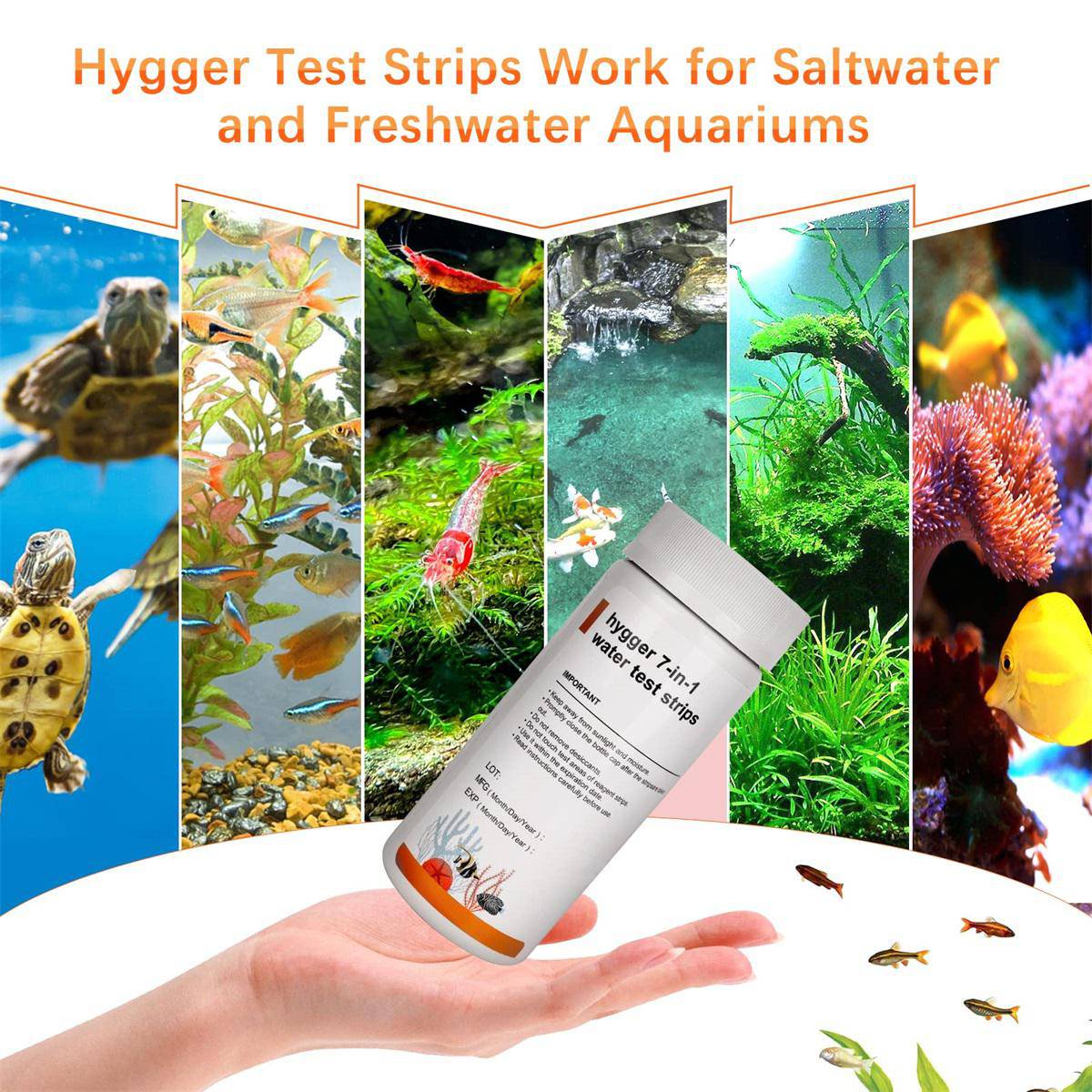How to Treat Ammonia Poisoning in Fish
Ammonia is fatal to ornamental fish, which may be the result of overfeeding, overcrowding, rapid and sudden changes in water conditions, excess waste and debris, etc. As the ammonia level increase, the fish in your tank would face stress, ammonia poisoning, or ammonia burn fish. This article will focus on how to heal ammonia poisoning fish. Let’s get started.
Signs of too much ammonia in the fish tank
Generally, to confirm the ammonia level, you’d better test the aquarium water with the help of aquarium water test strips. The strips are available in the hygger online store or local fish stores. Without water testing tools, how to determine whether there is too much ammonia in your tank? Actually, in the face of excess ammonia, your tank would show some symptoms. Next, we will list some in this segment.
- Fish gasp for air on the water surface
- Lethargic fish
- Loss of appetite
- Red or purple gills on the fish body
- Fish become inactive and stay at the bottom of the tank
- Strong ammonia smell in your tank
What does ammonia burn look like on fish
Ammonia burn is a sign of ammonia poisoning. The too-high ammonia level will chemically burn your fish, such as fins, gills, eyes, and skin. Plus, ammonia burn would also cause internal bacterial infections.
Commonly, fish suffering from ammonia burn will not show obvious symptoms until two or three days after exposure to a tank with high ammonia levels. Once the fish suffer ammonia burn, you may find damage on their skin, rotted fins, and cloudy eyes.
Take ammonia burn in goldfish as an example. Once they get ammonia burned, red or purple rashes will appear on the fish bodies. Then you can see bloody gills and fins. As it deteriorates, more red spots and strips will show on fish skin, gills, and fins.

How to treat ammonia poisoning in fish
Heal ammonia poisoning in fish
Seeing that ammonia poisoning is damaging and even fatal to fish, then how to cure ammonia burn fish? Just read on, this part will give you some ideas.
- Lower ammonia level
In general, if the ammonia level is over 1 ppm, you should adjust immediately. You can do water changes to reduce ammonia levels. Moreover, it is feasible to neutralize ammonia with chemical pH control products. For more ways to lower ammonia levels, you can go to How To Lower Ammonia In Fish Tank.
- Reduce feeding amount
More feeding amount or overfeeding means more waste and uneaten food, which can be an ammonia source. Once the ammonia level reaches fairly high, you should stop feeding for several days.
- Never introduce more new fish
More fish will lead to water parameter changes. Hence, never introduce any new fish before the ammonia and nitrite levels are below zero and remain stable.
- Quarantine fish suffering ammonia burn and apply medication
As for fish suffering ammonia burn in your tank, you’d better quarantine them and heal them with the help of antibiotics or antibacterial medication. Though medication is effective, it should be the last remedy. Because the medication may cause stress to fish.

How to prevent ammonia poisoning fish
- Grow beneficial bacteria
During the primary period of setting up a new tank, growing beneficial bacteria can be helpful to complete the nitrogen cycle in your tank, which keeps the water parameters balanced. For more additional info about the nitrogen cycle, you can go to How Does the Nitrogen Cycle Work in an Aquarium.
- Never overstock
Overstock means more waste. As waste and other unnecessary substances build up in your tank, the water quality will become poor gradually. Besides that, overstock also poses risks to fish fights and fish health.
- Build a great filtration system
Poor water quality may be the result of excess ammonia, which poses threats to fish health. Luckily, a great filtration system is helpful to remove ammonia and keep fish in a healthy living environment.
- Do regular water changes and tank cleaning
As you change the aquarium water, the ammonia level will be relatively decreased. As a result, the aquarium water would not be trapped in bad conditions. In general, you can change 15-30 percent of the water each week or every two weeks. Just decide according to your tank status. Plus, test the water each time after the water changes.
During the tank cleaning process, you should remove dead aquatic plants, algae, waste, uneaten food, and other unnecessary debris. You can finish it with the help of an aquarium tools kit and fish tank glass cleaner.
So, what now?
In short, a lower level of ammonia will damage fish gills, while a higher level of ammonia can be fatal to fish. Thus, the earlier you find ammonia poisoning in fish, the sooner and easier they can get cured. For instance, fish suffering from ammonia burn commonly get better after treatment for 3–5 days. So, keep in mind – observe your fish regularly. Once you see any abnormal symptoms or behavior, find the root cause and then take the necessary steps and start the treatment.
That’s all for today. If you have more ideas about ammonia poisoning in fish, welcome to share them with us in the comment. Or if you want to learn more about this topic, just stay tuned to the hygger blog. We will share more in later blogs. Finally, thanks for taking the time, and we hope this article helps you out.



